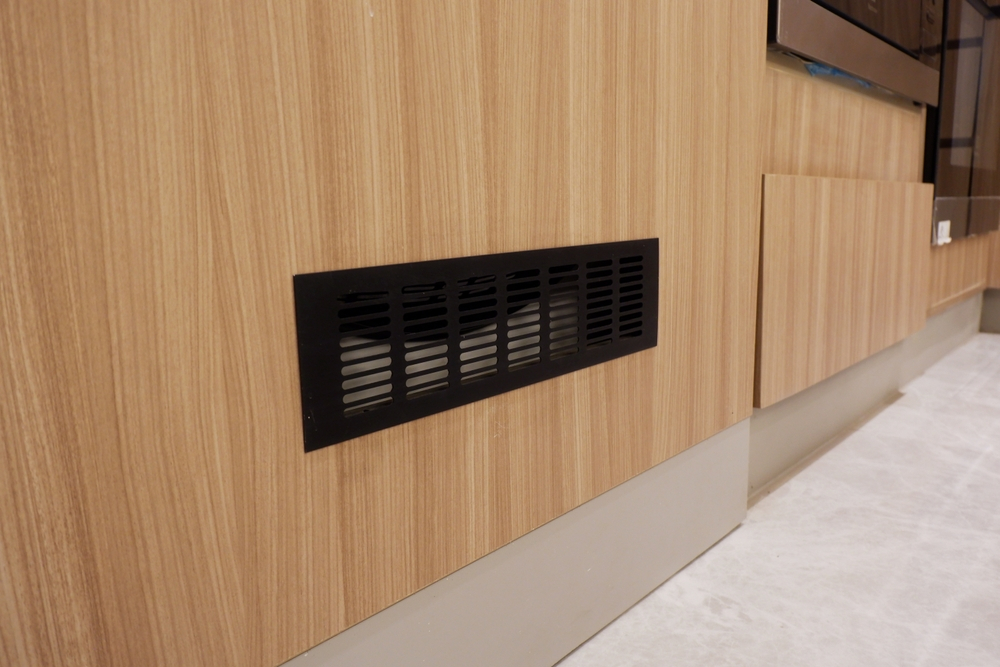Proper ventilation is crucial for maintaining a comfortable and healthy living environment in a home. It helps regulate temperature, remove excess moisture, and improve air quality by bringing in fresh air and removing stale air.
However, if vents are blocked or covered, it can disrupt the proper functioning of a home’s heating and cooling system, leading to issues such as reduced efficiency, higher energy bills, and potential health problems.
we will explore the topic of whether or not it is advisable to put furniture over vents in a home.
Contents
- 1 Putting Furniture Over Vents
- 2 Consider The Size And Location Of The Vent
- 3 Consider The Size And Type Of Furniture
- 4 Consider The Layout Of The Room
- 5 Use A Vent Extender
- 6 Use Furniture With Open Bases
- 7 What Are Vents And Why Are They Important?
- 8 Can You Put Furniture Over Vents?
- 9 Alternatives To Placing Furniture Over Vents
- 10 Final Note
Putting Furniture Over Vents
Here are five tips to consider when deciding whether or not to put furniture over vents
- Consider the size and location of the vent – Smaller vents in low-traffic areas may not be significantly impacted by furniture, while larger vents in central locations may be more affected.
- Consider the size and type of furniture: Larger pieces of furniture, such as sofas and beds, are more likely to block vents than smaller pieces, such as chairs or side tables.
- Consider the layout of the room: Rearranging the furniture in the room may allow for the vent to remain uncovered.
- Use a vent extender: A vent extender can redirect the flow of air around furniture, allowing for proper ventilation.
- Use furniture with open bases: Furniture with open bases, such as bookshelves or console tables, allows air to flow freely beneath them, reducing the impact on ventilation.
Consider The Size And Location Of The Vent
The size and location of the vent can impact how much it is affected by furniture. For example, a small vent in a low-traffic area may not be significantly impacted by a small piece of furniture, whereas a large vent in a central location may be significantly impacted by a large piece of furniture. It is important to consider the size and location of the vent when deciding whether or not to put furniture over it.
Consider The Size And Type Of Furniture
The size and type of furniture can also affect how much it impacts the flow of air through a vent. Larger pieces of furniture, such as sofas and beds, are more likely to block vents than smaller pieces, such as chairs or side tables. It is worth considering the size and type of furniture when deciding whether or not to put it over a vent.
Consider The Layout Of The Room
One alternative to placing furniture over a vent is to rearrange the furniture in the room to allow for the vent to remain uncovered. This may involve moving larger pieces of furniture to a different location or adjusting the layout of the room.
Use A Vent Extender
A vent extender is a device that can be placed over a vent to redirect the flow of air around furniture. This can be an effective solution if you need to place furniture over a vent but still want to ensure proper ventilation.
Use Furniture With Open Bases
Furniture with open bases, such as bookshelves or console tables, allows air to flow freely beneath them, reducing the impact on ventilation. This can be a good option if you need to place furniture over a vent but don’t want to block the flow of air completely.
What Are Vents And Why Are They Important?
Vents are openings in a home’s walls, floors, or ceilings that allow air to flow in and out. They are typically found in areas such as the living room, bedroom, kitchen, and bathroom.
In a home with a central heating and cooling system, vents are connected to ducts that distribute conditioned air throughout the home. They are an essential component of the system, helping to regulate temperature and maintain a comfortable living environment.
In addition to their role in heating and cooling, vents also play a vital role in air quality by allowing fresh air to circulate and removing stale air and excess moisture.
Can You Put Furniture Over Vents?
It is generally not recommended to put furniture over vents as it can obstruct the flow of air and reduce the effectiveness of the heating and cooling system.
Furniture such as sofas, beds, and dressers can block the vents, preventing them from functioning properly and potentially leading to issues such as uneven temperatures in different areas of the home and higher energy bills.
Additionally, covering vents with furniture can create a breeding ground for mold and other allergens, which can be harmful to respiratory health.
However, it is worth noting that the impact of covering vents with furniture will depend on the size and location of the vents as well as the size and type of furniture being placed over them. For example, a small vent in a low-traffic area may not be significantly affected by a small piece of furniture, whereas a large vent in a central location may be significantly impacted by a large piece of furniture.
Alternatives To Placing Furniture Over Vents
If you are considering placing furniture over a vent, there are a few alternatives to consider that will allow you to maximize the use of space without compromising ventilation:
Rearrange The Furniture
Consider rearranging the furniture in the room to allow for the vent to remain uncovered. This may involve moving larger pieces of furniture to a different location or adjusting the layout of the room.
Use A Vent Extender
A vent extender is a device that can be placed over a vent to redirect the flow of air. This can be an effective solution if you need to place furniture over a vent but still want to ensure proper ventilation.
Use Furniture With Open Bases
Consider using furniture with open bases, such as bookshelves or console tables, to allow air to flow freely beneath them. This can be a good option if you need to place furniture over a vent but don’t want to block the flow of air completely.
Final Note
It is generally not recommended to put furniture over vents as it can obstruct the flow of air and reduce the effectiveness of the heating and cooling system. Covering vents with furniture can also create a breeding ground for mold and other allergens, which can be harmful to respiratory health.
However, if you do need to place furniture over a vent, there are alternatives

